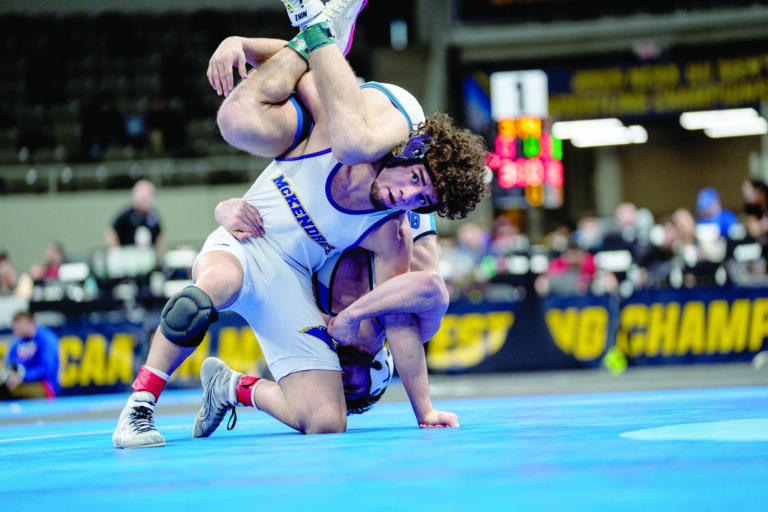Jared Lankford: Holding on until the end

During the offseason, rule changes for what are considered unfair advantages in sports occur regularly.
Take the “Tush Push,” made famous by the Philadelphia Eagles in the NFL. Effectively, it is a glorified quarterback sneak with the twist of having over 600 pounds of men gently nudging the quarterback forward to gain the necessary distance for a score or first down.
In the last three seasons, the Eagles have converted 110 out of 129 attempts, or a success rate of 85%.
The play has become unstoppable according to some, and there is now a push to change the rules.
Until the rule is changed, the play will continue to be a staple in the Eagles’ playbook.
Similarly, other sports have faced similar sorts of issues.
Last month, Monett High School hosted the Class 4, District 12 basketball tournament.
The girls’ championship game featured Aurora and Cassville. The two teams met during the regular season, with the Lady Houn’ Dawgs earning a 51-20 victory over the Lady Wildcats.
Aurora led in the title game at intermission, 17-12. The third quarter began with Cassville missing a shot, then witnessing Aurora proceed to hold the ball for over 7 minutes with the Lady Wildcats sitting in a zone, resulting in a total of zero points being scored in the frame.
Known as “stalling the ball,” the tactic has long been under fire from basketball fans. The critics argue that it is boring, shows a lack of sportsmanship, and while it is not against the rules, it violates the spirit of competition and competitiveness.
I freely admit that I am not a fan of stalling the ball like what occurred at Monett. In fairness though, Cassville refused to leave its base zone defense and guard 40 feet from the basket and allowed Aurora to stall.
Even though it is not the most compelling basketball strategy, it is still a legal and effective game strategy.
As I pondered my thoughts about this subject, it did occur to me that while many fans claim to not be a fan of stalling, they actually do support the strategy.
Consider end-of-quarter or end-of-half tactics. We have all watched or encouraged the team from the stands to hold the ball for the final 45-60 seconds to get the last shot.
How is that any different than holding the ball for 5, 6, or 7 minutes?
This past season, members of the Missouri State High School Activities Association (MSHAA) voted to allow a 35-second shot clock to be used in tournaments (excluding postseason) or shootout-style events under certain conditions. One of those conditions was that every team in the tournament had to agree to the addition. If one single team objected, the system could not be used.
While MSHSAA member schools supported the shot clock in a trial form, the voting members outright rejected the implementation for all regular-season events.
Monett High School supported the inclusion of the shot clock after both varsity coaches expressed no issues with the proposal.
However, many districts opposed the measure for varying reasons.
Ty Goetz, Monett athletic director, said the additional installation of permanent shot clocks would cost the district anywhere from $1,500-$3,000. The school would also need to pay an extra game worker for every event just to run the shot clock.
While a district like Monett could easily absorb the incurred and continual costs, many smaller districts that already struggled to cover the officials’ and workers’ fees with gate receipts would be further strained.
Goetz, who also officiates high school basketball, noted the inclusion of a shot clock would provide an extra mechanic that game officials would need to monitor, let alone the fact they would need to adjudicate when determining if a team got off a shot before the buzzer sounded.
Goetz, like myself, believes that Missouri will eventually fully implement the shot clock, but any such inclusion is at least two years away – at best.
Until then, stalling is just like the tush push. Fans may not like it. Fans may not think it is fair. Fans may think it is cheating or violates the spirit of competitiveness.
But, it is still legal, and teams on the receiving end of the tactic must find a way to stop it from working.
Jared Lankford is the sports reporter for Monett Monthly and has 15 years experience covering Monett-area athletics. He may be reached at monettsports@gmail.com





